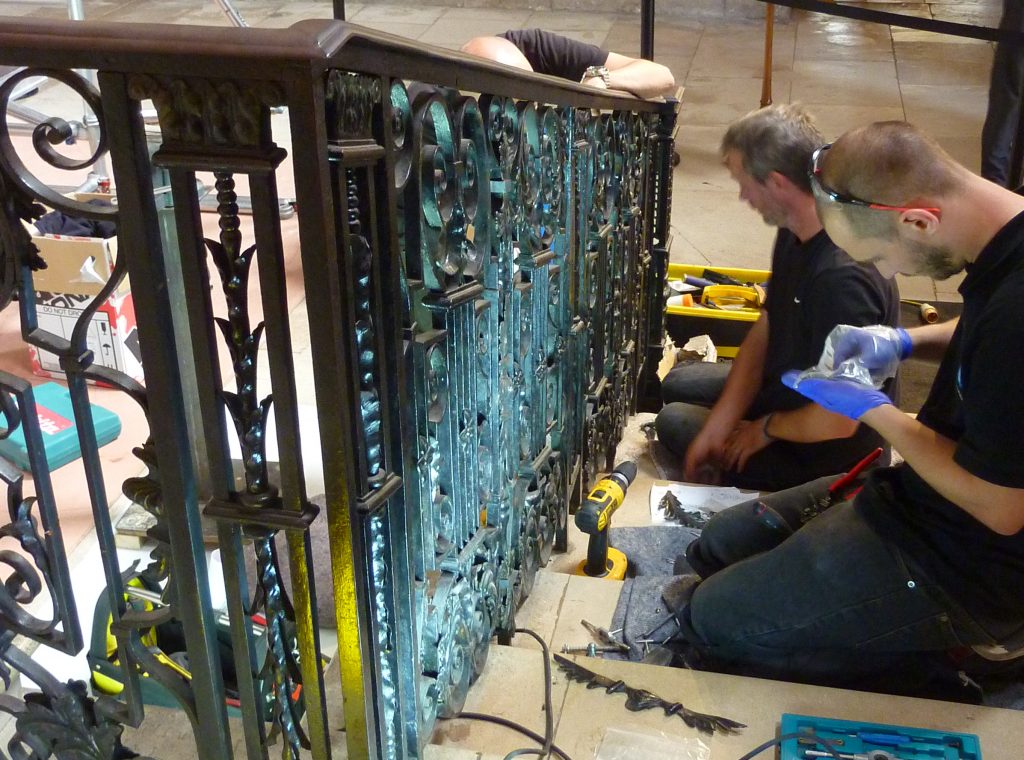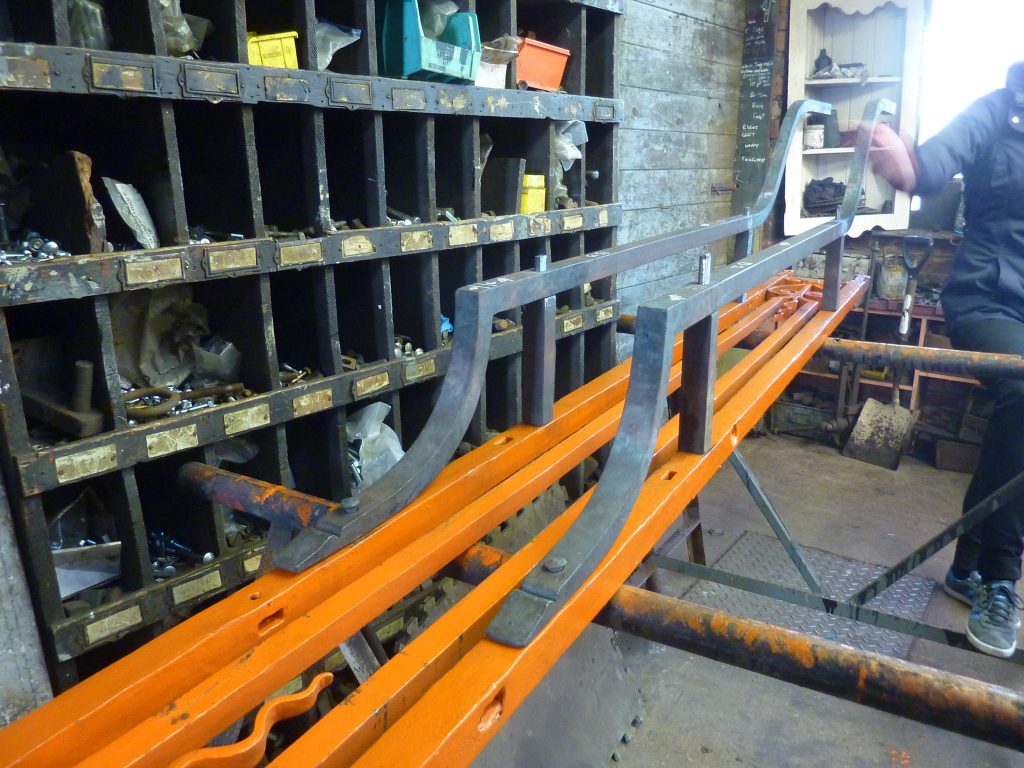Tijou Ironwork
Hampton Court Palace and gardens include the magnificent baroque ironwork of the renowned artist blacksmith Jean Tijou. Tijou was commissioned from 1689 to 1710 for a number of significant works upon which Martin Ashley Architects have undertaken Conservation Plans, condition surveys, detailed research, repair schedules and repair programmes. These have included the Kings Stair, the Queens Stair the East Front Vestibule Gates, the Ditton Gates, the Kingston Gates, the Lion Gates, Barge Walk Railings, the Apprentice Garden Gates and the Tijou Screen.
Surveys have focussed upon decay processes according to each location, original construction, repair methods and materials establishing a chronology of intervention and change to enable informed decisions for repair. In some instances the work has allowed the opportunity to reinstate lost elements requiring careful contextual design.
Detailed research has entailed analysis of archival images, fragments held in store at Hampton Court Palace and also at the Victoria & Albert Museum alongside Paint Analysis and proposed Archaeo-metallurgy.
Various surface coatings have been used historically. These have included Smalt, blue paint dusted with glass fragments, gilding, lead paint and fillers, Zinc Chromate paints and Cadmium plating. All of these provide date markers in the chronology of intervention, but some of these are highly toxic as well as being Category 1 Carcinogens.
The combination of research, examination and practical understanding is shedding new light upon what is considered to be the Holy Grail of the Blacksmiths art.
Tijou’s work is of the most exceptional quality. The processes used to make repoussé acanthus leaves are at the zenith of the blacksmiths art. However the skills do still exist and the level of quality can be matched in both artistic and technical skill.
Hampton Court Palace and gardens include the magnificent baroque ironwork of the renowned artist blacksmith Jean Tijou. Tijou was commissioned from 1689 to 1710 for a number of significant works upon which Martin Ashley Architects have undertaken Conservation Plans, condition surveys, detailed research, repair schedules and repair programmes. These have included the Kings Stair, the Queens Stair the East Front Vestibule Gates, the Ditton Gates, the Kingston Gates, the Lion Gates, Barge Walk Railings, the Apprentice Garden Gates and the Tijou Screen.
Surveys have focussed upon decay processes according to each location, original construction, repair methods and materials establishing a chronology of intervention and change to enable informed decisions for repair. In some instances the work has allowed the opportunity to reinstate lost elements requiring careful contextual design.
Detailed research has entailed analysis of archival images, fragments held in store at Hampton Court Palace and also at the Victoria & Albert Museum alongside Paint Analysis and proposed Archaeo-metallurgy.
Various surface coatings have been used historically. These have included Smalt, blue paint dusted with glass fragments, gilding, lead paint and fillers, Zinc Chromate paints and Cadmium plating. All of these provide date markers in the chronology of intervention, but some of these are highly toxic as well as being Category 1 Carcinogens.
The combination of research, examination and practical understanding is shedding new light upon what is considered to be the Holy Grail of the Blacksmiths art.
Tijou’s work is of the most exceptional quality. The processes used to make repoussé acanthus leaves are at the zenith of the blacksmiths art. However the skills do still exist and the level of quality can be matched in both artistic and technical skill.

















